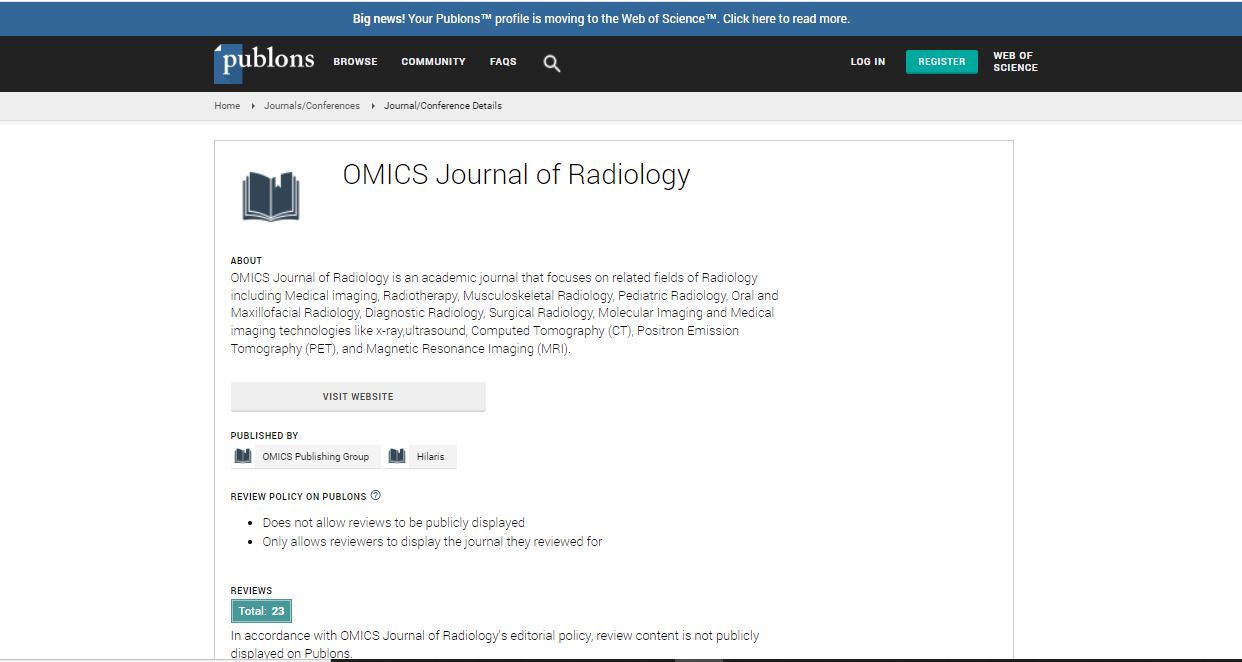Research Article
Are Variations of Paranasal Sinuses and Infundibular Trace Length Responsible for Development of Maxillary Sinusitis?
Paşaoğlu L*, Toprak U, Üstüner E, Temel E, Özer H and Mamedova DAnkara Numune Training and Research Hospital, Altındağ, Ankara, Turkey
- *Corresponding Author:
- Lale Paşaoğlu
Radiologist, Ankara Numune Training and Research Hospital
Talatpaşa Blv No: 44, Altindag, Ankara, Turkey
Tel: 00905357687688
E-mail: ldamgaci@hotmail.com
Received date: August 06, 2017; Accepted date: August 16, 2017; Published date: August 21, 2017
Citation: Paşaoğlu L, Toprak U, Üstüner E, Temel E, Özer H, et al. (2017) Are Variations of Paranasal Sinuses and Infundibular Trace Length Responsible for Development of Maxillary Sinusitis? OMICS J Radiol 6:270. doi: 10.4172/2167-7964.1000270
Copyright: © 2017 Paşaoğlu L, et al. This is an open-access article distributed under the terms of the Creative Commons Attribution License, which permits unrestricted use, distribution, and reproduction in any medium, provided the original author and source are credited.
Abstract
Purpose: To determine whether the lenght and width of ethmoid infundibulum relate to maxillary sinusitis. In addition, evaluation of the relationship of maxillary sinusitis to the type of infundibulum and to anatomical sinonasal variations is also aimed to observe.
Materials and methods: Paranasal sinus computerized tomography images of 491 clinically proven rhinosinusitis cases are analyzed retrospectively by two radiologysts. The length is measured by drawing curve traces and width is measured from the narrowest region for 982 ethmoid infundibula in-total. Maxillary sinusitis of the cases is graded according to the Lund and MacKay score. Type, width and length of ethmoid infundibulum and sinonasal anatomical variations are compared for the cases in terms of having with and without maxillary sinusitis.
Results: Type and length of ethmoid infundibulum are found not to be risk factors for maxillary sinusitis (p>0.05). Length of EI are similar between score 0 and score 1-2 maxillary sinusitis (p>0.05) but width was much more in patients with having score 1 and 2 maxillary sinusitis compared with those not having sinusitis (score 0) (p<0.05). Maxillary ostial closure with according expansion of ethmoid infundibulum is seen in maxillary sinusitis. Sinusitis risk is increased in presence of ethmoid bulla. The other anatomical variations can not be determined as risk factors for sinusitis.
Conclusion: In contrary to general belief, paranasal variations do not constitute risk for maxillary sinusitis apart from ethmoid bulla. Type and trace length of infundibulum are not risk factors for sinusitis. Ethmoid infundibulum is expanded with sinusitis.

 Spanish
Spanish  Chinese
Chinese  Russian
Russian  German
German  French
French  Japanese
Japanese  Portuguese
Portuguese  Hindi
Hindi 
